- Home
- Peter Ackroyd
J. M. W. Turner
J. M. W. Turner Read online
Table of Contents
Title Page
LIST OF ILLUSTRATIONS
CHAPTER ONE - 1775–1799
CHAPTER TWO - 1799–1802
CHAPTER THREE - 1802–1805
CHAPTER FOUR - 1805–1811
CHAPTER FIVE - 1811
CHAPTER SIX - 1811–1813
CHAPTER SEVEN - 1813–1816
CHAPTER EIGHT - 1816–1819
CHAPTER NINE - 1819–1827
CHAPTER TEN - 1827–1833
CHAPTER ELEVEN - 1833–1844
CHAPTER TWELVE - 1844–1851
SELECT BIBLIOGRAPHY
About the Author
ALSO IN PETER ACKROYD’S BRIEF LIVES
Copyright Page
LIST OF ILLUSTRATIONS
Illustrations in the text
J. T. Smith: Turner in the Print Room of the British Museum, late 1820s; water-colour. British Museum
Self-portrait, 1791; water-colour touched with white. National Portrait Gallery
George Dance: Turner, 1800; pencil. Royal Academy
C. R. Leslie: sketch of Turner lecturing at the Royal Academy, 1816; pencil. National Portrait Gallery
C. Turner after J. M. W. Turner: A Shipwreck, 1806–7; mezzotint. British Museum
Design for Isleworth in the Liber Studiorum (pub. 1819); ink wash, pen and ink and water-colour on paper. Turner Collection, Tate Gallery
Etched outline for Young Anglers from the Liber Studiorum (pub. 1811). The Fine Arts Museum of San Francisco; California State Library
The lodges at the East Gates of Farnley Hall, c. 1818. Gouache on grey paper. Private collection. Courtauld Institute of Art, University of London
Reflections and Refractions in Two Transparent Globes, One Half-filled with Water, 1810; water-colour. Turner Collection, Tate Gallery
W. B. Cookes after W. Havell: Sandycombe Lodge, Twickenham , 1814; engraving. Tate Gallery
J. Linnell: studies made during Turner’s lecture on perspective, 27 Jan. 1812; pencil. Tate Gallery
G. Jones: Turner’s Gallery: the artist showing his work, c. 1852; oil. Ashmolean Museum, Oxford
R. Doyle: Turner painting one of his pictures, from The Almanack of the Month, June 1846. National Portrait Gallery
George Richmond: Portrait of Ruskin, 1843; photogravure after a lost water-colour. Ruskin Library, University of Lancaster
John Ruskin: Turner . . . dressed for a visit to the Royal Academy, c. 1840; silhouette. Royal Academy
Colour Section
Self-portrait, c. 1799; oil. Turner Collection, Tate Gallery
S. W. Parrott: Turner on Varnishing Day at the Royal Academy, c. 1846; oil on panel. Collection of the Guild of St. George, Sheffield Galleries & Museums Trust
Snow Storm: Hannibal and His Army Crossing the Alps, 1812; oil. Turner Collection, Tate Gallery
Frosty Morning, 1813; oil. Turner Collection, Tate Gallery
Dido Building Carthage, or the Rise of the Carthaginian Empire (detail), 1815; oil. National Gallery
Petworth Park, c. 1828; oil. Turner Collection, Tate Gallery
Calais Pier, An English Packet Arriving, 1803; oil. National Gallery
Messieurs les Voyageurs, 1829; water-colour and body-colour (gouache) with scraping out. BAL/British Museum
Sta fa, Fingal’s Cave, 1832; oil on canvas. (c) Yale Centre for British Art, Paul Mellon Collection, USA/BAL
The Battle of Trafalgar, 1824; oil. National Maritime Museum, Greenwich
The Fighting Temeraire, 1838; oil. National Gallery
Turner in the print room at the British Museum.
CHAPTER ONE
1775–1799
Joseph Mallord William Turner was a child of London. His father owned a barber’s shop in Maiden Lane, off Covent Garden, having migrated to the city from a small town in Devon. His mother came from a line of London butchers. Turner himself appeared to all who knew him to be a quintessential citizen—short and stocky, energetic and pugnacious. His speech was recognizably that of a Cockney, and his language was the language of the streets.
He had another direct inheritance. His father was short, also, and his famous son was said to resemble him. According to a family friend William Turner was “spare and muscular, with small blue eyes, parrot nose, projecting chin, fresh complexion.” His son boasted, if that is the word, the same nose and chin. The friend added that William Turner “was more cheerful than his son, and had always a smile on his face.” His happy disposition no doubt assisted in the success of his barber’s shop, where the most important duty was to please the customer, and in any case he seems to have been a proficient businessman. He passed on his economical habits to his son. “Dad never praised me,” Turner once said, “except for saving a shilling.” It was a lesson he recalled for the rest of his life.
Mary Turner was a considerably more difficult character. She was prone to fits of violent temper, and in the end her rages became so uncontrollable that she was eventually consigned to an asylum. A lost portrait of her suggested “a strong likeness to Turner about the nose and eyes . . . she stands erect, and looks masculine, not to say fierce.” Turner seems to have inherited something of his mother’s temper, but it never passed beyond the boundaries of sanity.
His parents had married at Inigo Jones’s church of St. Paul’s in Covent Garden in the summer of 1773 by means of a “special licence,” which suggests haste or circumspection. Two years later their first-born son entered the world by way of the family house at 21 Maiden Lane. The infant was baptised at the same church in Covent Garden, with his trinity of Christian names apparently being taken from his maternal grandfather and great-grandfather. Joseph Mallord William Turner’s date of birth, 23 April 1775—otherwise known as St. George’s Day—was shared with Shakespeare’s traditional birthday. There was another omen. Four days after his birth, a phenomenon of “three suns” was observed in the afternoon sky—a fitting prelude to the career of an artist who is supposed to have declared on his death-bed that “the sun is god.”
It was a busy, and noisy, household. William Turner’s shop was on the ground floor, where he could be seen busily lathering the genteel with his soft badger brush, and the basement next door was occupied by a cider cellar described euphemistically as a “midnight concert room.” It is an interesting coincidence that 21 Maiden Lane had been used as an exhibition room by the Free Society of Artists, and then later as a school by the Incorporated Society of Artists of Great Britain. London is full of such fortuitous associations.
At a later date the Turners crossed the road to 26 Maiden Lane, where they lived on the north side. The sun would in any case have scarcely penetrated this narrow thoroughfare in the heart of what was even then known as the “West End.”
It was a fashionable area filled with actors and painters and prostitutes. Covent Garden itself was notorious for its bagnios and brothels—it was called by one contemporary “the great square of Venus”—and in their vicinity there were of course many taverns and gaming houses as well as expeditious thieves and pickpockets. If you wished for a quick education in the ways of the London streets, then Turner’s neighbourhood was the place to come. It has often been observed that in Turner’s sketches the children have alert and watchful faces; they have what was once called an “old-fashioned” look. In one sketch he has added the notation, “Children picking up Horse Dung, gathering Weeds.” These children were all around him.
In the area, there were respectable establishments vying for trade, among them jewellers, print-shops and wig-makers. It was also a distinctive venue for the fashionable theatregoers of the day, bisected as it was by the Theatre Royal in Drury Lane and the Royal Opera House of Covent Garden. It was perhaps not coincidental that the young Turner earned part of hi
s living as a scenic painter; theatricality was in the London air.
When Turner walked through the market of Covent Garden he seems to have been entranced by the energetic variety of its life and by the sheer spectacle of its multifarious colours. His great nineteenth-century interpreter, John Ruskin, noted that “he particularly enjoyed and looked for litter, like Covent Garden wreck after the market. His pictures are often full of it from side to side.” In Ruskin’s company Turner once extolled “that litter of stones” in his painting of an Alpine scene. In later life, too, he loved to paint oranges as if in some instinctive reversion to the market world of his childhood.
And then of course there was the Thames, a few yards south of his home in Maiden Lane. It was down a court, across the Strand, and then at the bottom of a riverside alley—no more than two or three minutes away. He has become known as the great painter of the Thames in all its moods and localities, and his first vision of it was by the dockside of London with the wharves and the barges, the cargo-boats and the wherries. It was a dirty and noisy marine world, where sea and city collided in an embrace like lovers. It was a world of trade and barter, but Turner also noticed the rush of the tide and the boats “shooting” London Bridge when the ebb tide was at flood. He knew the sailors and the merchants, the labourers, and the “mud-larks” searching for pickings along the dirty shore. It was his world. It was the landscape of his imagination. He lived by the Thames and eventually he died by the Thames. It was an inseparable part of his being.
London could be fatal as well as benign. At the age of five, in 1786, his younger sister died of some unknown ailment. All at once he acquired the solitariness and intensity that are often the characteristics of the only child. Three years later Turner himself was sent away from the city by his parents to the more salubrious atmosphere of Brentford by the Thames; it seems that he had suffered from “a fit of sickness” and was therefore despatched to the care of his maternal uncle, John Marshall, who followed the family profession of butcher. Turner lived above the shop with his relatives, on the north side of the market square, and became thoroughly acquainted with the riverside about Brentford; his childhood haunts of Putney and Twickenham, Kew and Hampton Court, all feature in his later work.
He was sent to the Brentford Free School in the High Street, where he acquired the rudiments of reading, writing and arithmetic to fit him for a trade. But he began to display his interest in another career altogether. He once claimed that he had amused himself, on the way to school, “by drawing with a piece of chalk on the walls the figures of cocks and hens.” His aptitude for drawing did not go unrecognised for long, and it seems likely that his first employment as an artist was in hand-colouring the engravings in Henry Boswell’s The Antiquities of England and Wales . In that solid volume he encountered pictures of cathedrals and abbeys, castles and monuments; his impression of them must have been particular and profound, since in later life he returned to many of the same subjects.
After a period in Brentford he was sent with friends of his uncle to the seaside town of Margate where he seems to have remained for several months. Once more he attended the local school but his real education took place outside the classroom, beside the open sea. He never ceased to be entranced by the world of the fishermen—their nets, their boats and their catch.
His earliest drawings, dating from 1787, are of conventional scenes. The twelve-year-old boy copied or adapted views of bridges and castles from engravings. His first sketches from nature rather than from art were taken at Oxford, to which neighbourhood his uncle had retired from the butcher’s trade. Yet it also seems likely that in this period Turner returned to London. There are repeated references to the fact that his father pinned up Turner’s sketches in his barber’s shop, for sale at prices ranging from one shilling to three shillings. In this period William Turner is said to have remarked to one customer, the artist Thomas Stothard, that “my son is going to be a painter.” He may have wanted advice or encouragement from the famous man, but his son had enough energy and determination of his own.
The young Turner also found work at an architect’s practise that instilled in him a lifelong interest in, and knowledge of, that art. He once told a friend that “if he could begin life again, he would rather be an architect than a painter.” In later life he even designed one of his own country retreats.
So for a short time he sketched and painted for Thomas Hardwick, a London architect who was working on the reconstruction of St. Mary the Virgin church in north-east London and who was rebuilding part of Syon House in Isleworth. For four years, in fact, he was involved in architectural drawing as something of a speciality.
Turner’s early training instilled in him a deep love and respect for human dwellings. He seems to enter the very stone and structure of the buildings that he represents with pen or brush, as if they had some deep life with which he could commune. In the same period he studied under another master, Thomas Malton, a perspective draughtsman and Covent Garden scene-painter. The general impression is of a young artist busily imbibing knowledge and practice from whatever quarter he could find.
It may have been Hardwick who recommended that the young Turner should apply to enter the Royal Academy School. There is a story that he approached William Turner and told him “that the boy was too clever and too imaginative to be tied down to a severe science. He recommended him to be sent as a student to the Royal Academy . . .” This was the place for aspiring young artists, where Blake and Gillray, Stothard and Rowlandson, had already studied. Turner found a sponsor in an Academician, John Francis Rigaud, who had been shown the drawings exhibited in the barber’s shop in Maiden Lane. So the young artist began the first stages of his career drawing, as a “probationer,” in the surroundings of Somerset House. He worked in the Antique School, or Plaster Academy, where he was asked to produce a technically exact portrait of an antique figure.
His work was deemed acceptable and he was enrolled as a student. He was a model pupil (if the pun can be allowed) and for the next two and a half years he worked among plaster casts and broken statuary, where he drew what lay around him, including the body of the Faun and the fingers of Apollo. No better training could have been granted to him, since in these early years he learned the significance of line and volume. In the Academy there was no interest in teaching topographical or landscape painting. Turner was later to become the master of sea and sky, and while he was still a student he began to pursue these passions. Nevertheless an understanding of how to represent the human figure was an essential step in his training as an artist.
He also learned much from the now elderly president of the Royal Academy, Sir Joshua Reynolds. It seems that he was permitted into the great man’s house in order to study his portraits. Turner may indeed have had ambitions himself to excel as a portrait painter, but there is little doubt that he was not suited by temperament for such a profession. So perhaps some good daemon or angel steered him away from an uncongenial pursuit. In the artist’s house in Leicester Fields Turner would also have seen work by Rubens, and Poussin, and Rembrandt, their canvases haunting him like a passion. He once declared that he spent “the happiest perhaps of my days” with Reynolds, and in later life Reynolds was the only English artist that Turner ever discussed.
In 1790 he exhibited his first water-colour. He was not quite fifteen, and yet already he manifests a firm sense of space and perspective. It was his first foray into a medium which he would dominate. The water-colour is of Lambeth Palace, but since the reverend pile is partially obscured by two friendly figures and a public house it is clear that the young Turner is more interested in the human than the divine world.
He was also occupied in less august surroundings, having been hired to assist the scenic artists at the Pantheon, a combined theatre and opera house in Oxford Street. Here, no doubt, he painted stormy seas and threatening skies for whatever melodrama was currently on offer. It was a way of earning badly needed income, to finance his more serious studies,
but in any case he seems to have had a natural aptitude for theatrical painting. It must have been something of a disappointment, therefore, when a year after he had been enlisted in the service of the Pantheon it burnt down. Never at a loss, however, he turned up the next morning at the site of the smoking ruin and proceeded to sketch it. He neglected his figure work at the Academy for ten days as he worked up his conception. He was always fascinated by fire and by ruins; in this early work, the vigour and energy of his invention are already in evidence. In the following spring he exhibited his finished water-colour at the Royal Academy under the title The Pantheon, the Morning after the Fire. He would become more inventive with his titles in subsequent years.
He did not find his inspiration only in London. He seems to have been born for travel, and for the rest of his life he made journeys throughout Britain and Europe. In the early autumn of 1791, during one of the vacations granted by the Academy, he travelled west to Bristol. He stayed in that city with a friend of his father, John Narraway, and, as is the way with incipient geniuses, seems to have made a marked impression upon the Narraway family. One niece later recalled that the sixteen-year-old Turner was “not like young people in general, he was very singular and very silent, seemed exclusively devoted to drawing, would not go into society” and “had no faculty for friendship.” Here in miniature lie the later impressions of the mature Turner as brusque when not entirely taciturn.
He was asked to sketch a self-portrait by one of the Narraways but replied, “It is no use taking such a little figure as mine, it will do my drawings an injury, people will say such a little fellow as this can never draw.” That has the ring of authentic speech, and emphasises Turner’s extreme self-consciousness. He could be shy and nervous, concealing his anxieties beneath the carapace of gruffness or rudeness.
Nevertheless, it seems he was persuaded as one selfportrait of this period has emerged, although its authenticity has been questioned; it shows a pretty young man with long curled hair and attired in fashionable dress. It reinforces the report that, in his youthful days, he was something of a dandy. And why should he not be? He wished to make an impression upon the world. That may be the reason also for the somewhat idealised self-portrait of 1799 (see colour section).

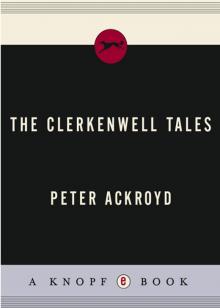 The Clerkenwell Tales
The Clerkenwell Tales The Canterbury Tales
The Canterbury Tales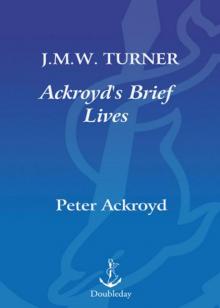 J. M. W. Turner
J. M. W. Turner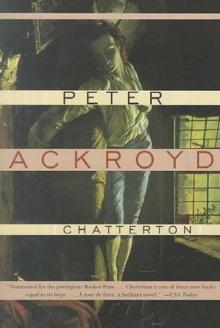 Chatterton
Chatterton The Canterbury Tales – A Retelling
The Canterbury Tales – A Retelling Alfred Hitchcock
Alfred Hitchcock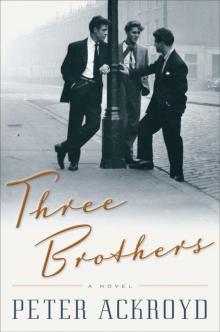 Three Brothers
Three Brothers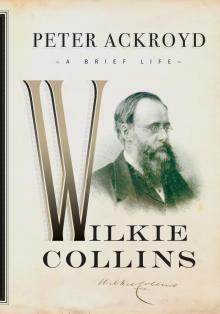 Wilkie Collins
Wilkie Collins Venice
Venice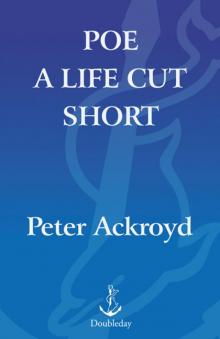 Poe
Poe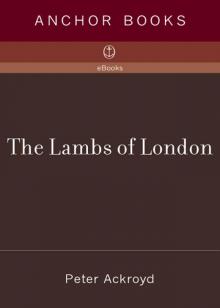 The Lambs of London
The Lambs of London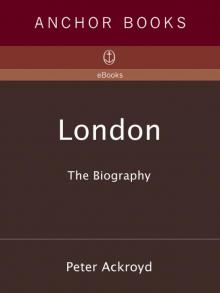 London
London Queer City
Queer City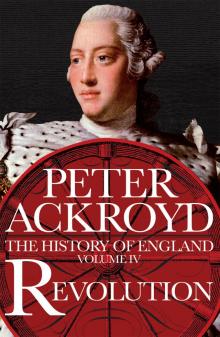 Revolution, a History of England, Volume 4
Revolution, a History of England, Volume 4 Venice: Pure City
Venice: Pure City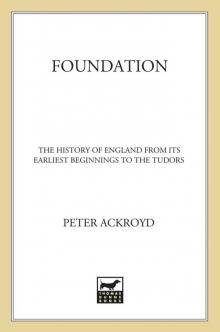 Foundation
Foundation Thames
Thames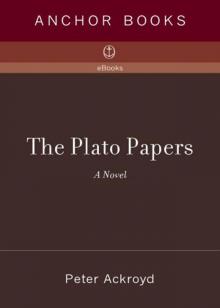 The Plato Papers
The Plato Papers The house of Doctor Dee
The house of Doctor Dee Rebellion: The History of England from James I to the Glorious Revolution
Rebellion: The History of England from James I to the Glorious Revolution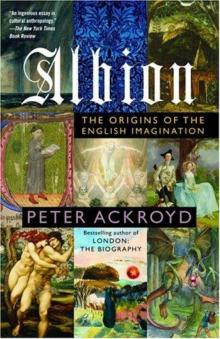 Albion: The Origins of the English Imagination
Albion: The Origins of the English Imagination The Fall of Troy
The Fall of Troy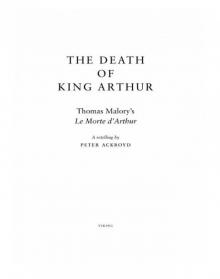 The Death of King Arthur
The Death of King Arthur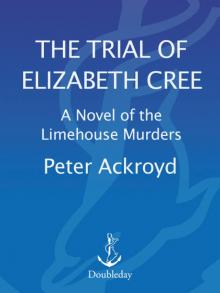 The Trial of Elizabeth Cree
The Trial of Elizabeth Cree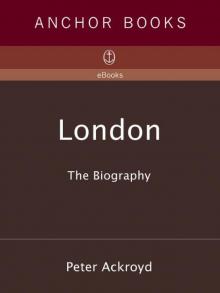 London: The Biography
London: The Biography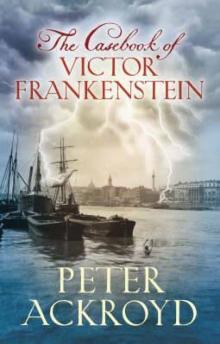 The Casebook of Victor Frankenstein
The Casebook of Victor Frankenstein Hawksmoor
Hawksmoor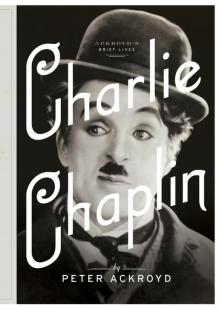 Charlie Chaplin
Charlie Chaplin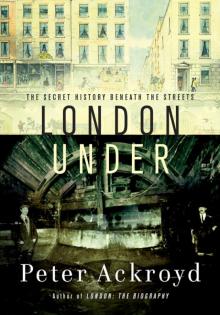 London Under
London Under